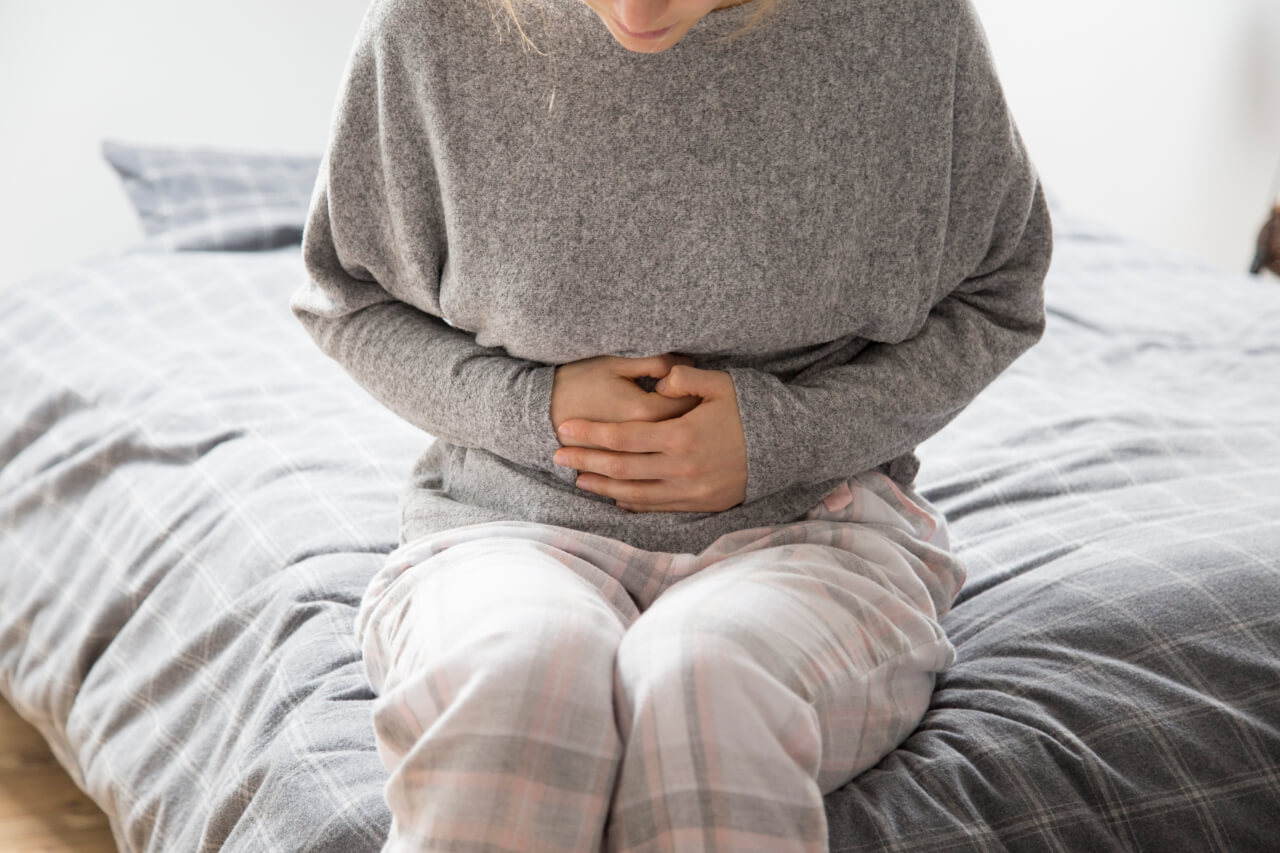Bowel obstruction and Crohn’s disease are two related conditions that affect the digestive system and can cause significant discomfort and complications.
In this article, we will explore what these conditions are, how they are connected, and how they can be treated and prevented. Crohn’s disease is a type of inflammatory bowel disease (IBD) that causes chronic inflammation of the gastrointestinal (GI) tract, which can affect any part from the mouth to the anus. The most common areas affected are the end of the small intestine (the ileum) and the beginning of the large intestine (the colon). Crohn’s disease can cause various symptoms, such as abdominal pain, diarrhea, weight loss, fever, fatigue, and blood in the stool.
The exact cause of Crohn’s disease is unknown, but it is believed to involve a combination of genetic, environmental, and immune factors. Bowel obstruction is a common complication of Crohn’s disease, which can occur when the inflammation, scar tissue formation, or narrowing of the GI tract blocks the passage of food or stool. Bowel obstruction can be partial or complete, and can be diagnosed with tests such as X-rays, CT scans, or colonoscopy. Bowel obstruction can have serious consequences, such as perforation, infection, or bowel death, if left untreated or if it recurs frequently.
Bowel obstruction is a condition where the normal passage of food or stool through the small or large intestine is blocked or slowed down. This can cause various symptoms and complications, depending on the location, severity, and cause of the obstruction. Bowel obstruction can be related to Crohn’s disease, a chronic inflammatory disorder of the digestive tract that can affect any part from the mouth to the anus.
The symptoms of bowel obstruction may include:
- Crampy abdominal pain that comes and goes.
- Loss of appetite.
- Constipation or diarrhea.
- Nausea and vomiting.
- Inability to pass gas or stool.
- Swelling of the abdomen.
- Fever and dehydration.
The symptoms may vary depending on the type and degree of obstruction.
For example, a partial obstruction may allow some food or liquid to pass through, while a complete obstruction may block everything.
A small bowel obstruction may cause more vomiting, while a large bowel obstruction may cause more constipation.
A pseudo-obstruction may mimic the symptoms of a true obstruction, but without a physical blockage.
The types of bowel obstruction can be classified based on the following criteria:
- The part of the intestine affected: small bowel obstruction or large bowel obstruction.
- The nature of the obstruction: mechanical or functional.
- The duration of the obstruction: acute or chronic.
A small bowel obstruction occurs when the blockage affects the small intestine, which connects the stomach to the large intestine.
The small intestine is responsible for breaking down food and absorbing nutrients and water.
A large bowel obstruction occurs when the blockage affects the large intestine, which includes the colon and the rectum.
The large intestine is responsible for absorbing water and forming stool.
A mechanical obstruction is caused by a physical barrier that prevents the normal flow of food or stool through the intestine.
Some of the common causes of mechanical obstruction are:
- Adhesions: bands of scar tissue that form after abdominal surgery or inflammation and can stick the intestines together.
- Hernias: protrusions of a part of the intestine through a weak spot in the abdominal wall or the groin.
- Tumors: abnormal growths of tissue that can be benign or malignant (cancerous) and can press on or invade the intestine.
- Strictures: narrowings of the intestine due to inflammation, scar tissue, or cancer.
- Volvulus: twisting of the intestine that can cut off the blood supply and cause tissue death.
- Intussusception: telescoping of one part of the intestine into another, usually affecting children.
- Fecal impaction: hardening of stool that can block the rectum or the colon.
A functional obstruction is caused by a problem with the muscle or nerve activity of the intestine that impairs the normal contractions that move food or stool along.
Some of the common causes of functional obstruction are:
- Ileus: temporary paralysis of the intestine that can occur after abdominal surgery, infection, injury, or certain medications.
- Pseudo-obstruction: chronic disorder of the intestine that causes symptoms similar to a mechanical obstruction, but without a physical blockage. The exact cause is unknown, but it may be related to nerve or muscle problems in the intestine.
- Medications: certain drugs that can affect the motility of the intestine, such as opioids, anticholinergics, or calcium channel blockers.
- Nervous system disorders: conditions that can affect the nerves that control the intestine, such as Parkinson’s disease, multiple sclerosis, or spinal cord injury.
- Metabolic disorders: conditions that can affect the electrolyte balance or the acid-base balance of the body, such as diabetes, kidney failure, or thyroid problems.
An acute obstruction is a sudden onset of symptoms that requires immediate medical attention.
An acute obstruction can be life-threatening if it causes perforation (hole), infection, or tissue death in the intestine.
A chronic obstruction is a long-lasting or recurrent condition that causes intermittent or mild symptoms.
A chronic obstruction can be managed with medication, diet, or lifestyle changes, but it may also require surgery if it worsens or causes complications.
Diagnosis
Bowel obstruction can be diagnosed with a physical examination and various tests, such as:
- X-rays: images of the abdomen that can show the presence and location of the obstruction, as well as signs of perforation or infection.
- CT scan: a more detailed image of the abdomen that can show the cause and extent of the obstruction, as well as the condition of the surrounding organs and tissues.
- Barium enema: a procedure that involves injecting a contrast dye into the rectum and taking X-rays of the colon.
- This can show the shape and size of the colon, as well as any blockages or abnormalities.
- Colonoscopy: a procedure that involves inserting a flexible tube with a camera and a light into the rectum and advancing it into the colon.
- This can allow the doctor to see the inside of the colon, as well as take biopsies or remove polyps if needed.
Treatment
The treatment of bowel obstruction depends on the cause, severity, and duration of the obstruction, as well as the overall health of the patient.
The main goals of treatment are to:
- Relieve the symptoms and prevent complications.
- Restore the normal function and motility of the intestine.
- Remove or bypass the obstruction if possible.
The treatment options may include:
- Medication: drugs that can reduce inflammation, pain, nausea, or vomiting, if there is an infection.
- Intravenous fluids: fluids that are given through a vein to prevent dehydration and correct electrolyte imbalance.
- Nasogastric tube: a tube that is inserted through the nose and into the stomach to decompress the stomach and remove excess gas and fluid.
- Bowel rest: a period of fasting or eating only clear liquids to allow the intestine to heal and recover.
- Surgery: an operation that involves opening the abdomen and removing or repairing the obstructed part of the intestine, or creating a new opening (stoma) for the stool to exit the body.
- Stent insertion: a procedure that involves placing a metal or plastic tube into the blocked part of the intestine to keep it open and allow the stool to pass through.
The prognosis of bowel obstruction depends on the cause, severity, and duration of the obstruction, as well as the overall health of the patient.
Some of the factors that can affect the outcome are:
- The presence of complications, such as perforation, infection, or tissue death.
- The type and extent of surgery, if needed.
- The risk of recurrence or re-obstruction.
- The underlying condition that caused the obstruction, such as Crohn’s disease or cancer.
Some of the ways to prevent or manage bowel obstruction are:
- Avoiding foods that can trigger inflammation or blockage, such as nuts, seeds, popcorn, or high-fiber foods.
- Staying hydrated and drinking plenty of fluids.
- Taking medications as prescribed and following the doctor’s instructions.
- Seeking medical attention if symptoms worsen or new symptoms appear.
- Getting regular screenings for colorectal cancer after the age of 50 or earlier if there is a family history or risk factors.
Conclusion
In conclusion, understanding the symptoms, causes, treatment, and prevention of bowel obstruction in the context of Crohn’s Disease is crucial for both patients and healthcare providers.
By recognizing early warning signs, implementing effective treatments, and adopting preventive measures, individuals can actively manage their condition and improve their quality of life.
As research and medical advancements continue, the knowledge gained will contribute to more tailored approaches in addressing this challenging aspect of Crohn’s Disease, bringing hope for better outcomes and a brighter future for those affected.
FAQs
What are the common symptoms of bowel obstruction in individuals with Crohn’s Disease?
Common symptoms include abdominal pain, bloating, vomiting, constipation, and the absence of bowel movements.
These may vary in intensity, and early recognition is vital for prompt intervention.
What causes bowel obstruction in individuals with Crohn’s Disease?
Bowel obstruction in Crohn’s Disease can result from inflammation, strictures (narrowing of the intestine), or the formation of scar tissue.
These factors collectively contribute to the blockage of the intestinal passage.
How is bowel obstruction in Crohn’s Disease treated?
Treatment approaches may involve medications to reduce inflammation, surgical intervention to remove blockages or damaged sections, and in some cases, bowel resection.
The choice of treatment depends on the severity and specific circumstances of the obstruction.
Can bowel obstruction in Crohn’s Disease be prevented?
While it may not always be preventable, managing Crohn’s Disease effectively with medication, adopting a tailored diet, and regular monitoring can reduce the risk of complications such as bowel obstruction.
Collaborating with healthcare professionals for personalized care is crucial.
Is surgery the only option for treating bowel obstruction in Crohn’s Disease?
Surgery is one of the treatment options, particularly for severe cases or when other interventions prove ineffective.
However, medications and lifestyle adjustments are often explored first to manage inflammation and minimize the risk of recurrence.
How does Crohn’s Disease-related bowel obstruction impact daily life?
Bowel obstruction can significantly impact daily life, causing discomfort, dietary restrictions, and potential disruptions in work or social activities.
Proper management, adherence to treatment plans, and open communication with healthcare providers are essential for individuals to navigate these challenges effectively.





